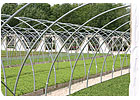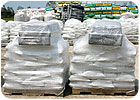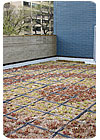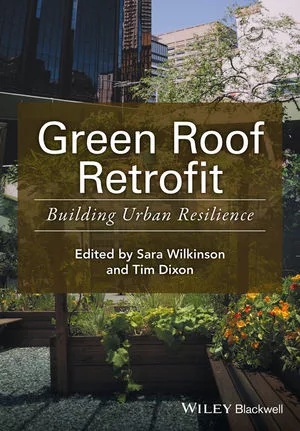Green Roof Technology Offers New Opportunities
Installing vegetated roofing systems on homes can be a new and lucrative opportunity for roofing contractors - especially for those that understand and take advantage of this new "growing" technology.

Installing vegetated roofing systems on homes can be a new and lucrative opportunity for roofing contractors - especially for those that understand and take advantage of this new "growing" technology.
Green roofs have become quite popular all over Europe, parts of Canada and Asia, and now the United States. However, usually these systems are placed atop commercial dwellings such as office buildings, schools, government facilities and hotels. But recently one manufacturer has developed a simplified green roof system specifically designed for homes and smaller facilities with low-slope roofs. In most situations, the system is actually easy enough for homeowners to install it themselves. But for a variety of reasons - such as lack of time, concerns about the home's structural capacity to support the green roof, safety concerns and the desire to have a professional involved - many will turn to roofing contractors to perform the installation. Providing the option of a green roof in the residential market could mean larger profit margins for contractors.

Some of these extensive green roofs are built directly on top of the roof by a crew of workers and landscapers. This process can be labor-intensive, time-consuming and costly for the customer. "This has been one of the major drawbacks to residential green roof installation," says James Lindell, Market Development Associate with GreenGrid®, a business of WestonSolutions Inc., which manufactures green roofing systems. "Homeowners are reluctant to spend a large amount of money for a green roof, even if they know the roof will produce financial savings for them over time."
A modular system, developed about three years ago, has helped make green roof technology more affordable for homeowners and other property owners. With this system, modules made of 60 percent recycled plastic are preplanted with soil and sedum, eliminating a great deal of the labor normally performed on top of the roof. The entire green roof "kit" - which includes modules, geotextile root and soil barriers, growth media, and plants - is delivered directly to the homeowner's property, ready for assembly. The modules, which come in varying sizes, are either square or triangular. They are placed directly on the roof, one after the other. "This helps speed installation from a week or more for a built-in-place roof on the traditional home to just a few hours," says Lindell. "This results in a significant cost savings for the property owner."
The system is designed for low-slope roofs roofs with a slope of 5 percent or less; the saturated weight of the material is about 15 pounds per square foot.
Lindell points out that when outside temperatures reach 80°F, the surface temperature of a conventional black rooftop can be as high as 180°. This heat affects the amount of energy necessary to cool the home. However, installation of a green roof provides insulating properties and can help keep the roof cool.
Some studies indicate that green roof systems can reduce cooling as well as heating costs by as much as 50 percent. In addition, they can significantly slow a building's heat gain and loss. "The end result is that the homeowner's heating and air conditioning systems do not have to work as hard and can operate more efficiently," says Lindell. "This is where the lower energy costs come in."
Another selling point for residential green roofs is sound insulation. According to Monica Kuhn, an architect based in Toronto, tests indicate that green roofs can reduce noise levels in rooms directly under the roof by as much as 40 decibels, which helps quiet the entire home from outside noises. "This makes them especially attractive for property owners who have homes near airports, busy freeways, and heavy industry," says Lindell.
Finally, Lindell indicates another advantage of green roofs is the fact that they can double the life expectancy of the homeowner's present roof. This is because extreme temperature swings - which result in the expansion and contraction of the roof-are moderated. Additionally, the roof's membrane is protected from harmful ultraviolet rays - as well as everyday wear and tear - by the green roof.

With extensive green roof systems, there may be some maintenance such as weeding, clearing debris, and watering when the roof is first installed, "but usually this is only for the first few weeks or couple of months," Lindell says. "After that, these roofs just need to be monitored."
Lindell adds that repairing the existing rooftop or accessing home mechanicals can be a bit difficult with some built-in-place systems, which might necessitate a cross section of the system being uprooted and reinstalled. "However, with the modular system, the modules just need to be picked up and repositioned once repair or maintenance work is completed," he notes.
Although there are other benefits to a green roof, such as minimizing water runoff after storms, reducing the urban "heat island" effect, and improving aesthetics, among others, the real selling points for homeowners are energy savings, sound insulation, and extended life of the present roof. As with any roof system, proper installation is essential.
Roofing contractors interested in selling these types of systems need to become thoroughly familiar with the technology, especially the most recent systems that have made installation much easier and more efficient. This will allow them to better communicate the benefits to the customer and help turn the contractor into an advisor, consultant and partner, helping customers save money and protect their most important investment.
For more information, visit www.greengridroofs.com.

Sedum is grown for the vegetated roof systems.
Installing vegetated roofing systems on homes can be a new and lucrative opportunity for roofing contractors - especially for those that understand and take advantage of this new "growing" technology.
Green roofs have become quite popular all over Europe, parts of Canada and Asia, and now the United States. However, usually these systems are placed atop commercial dwellings such as office buildings, schools, government facilities and hotels. But recently one manufacturer has developed a simplified green roof system specifically designed for homes and smaller facilities with low-slope roofs. In most situations, the system is actually easy enough for homeowners to install it themselves. But for a variety of reasons - such as lack of time, concerns about the home's structural capacity to support the green roof, safety concerns and the desire to have a professional involved - many will turn to roofing contractors to perform the installation. Providing the option of a green roof in the residential market could mean larger profit margins for contractors.

The modular green roof kits are packaged for delivery to the roofing contractor or the jobsite.
Easy to Install
A green roof involves the placing of low-maintenance, vegetated roof systems atop the present roof. These are not roof gardens. Instead, they are called extensive green roofs - systems employing 2 to 4 inches of soil in which hearty, drought-tolerant, low growing and fire-resistant plants referred to as sedums are planted.Some of these extensive green roofs are built directly on top of the roof by a crew of workers and landscapers. This process can be labor-intensive, time-consuming and costly for the customer. "This has been one of the major drawbacks to residential green roof installation," says James Lindell, Market Development Associate with GreenGrid®, a business of WestonSolutions Inc., which manufactures green roofing systems. "Homeowners are reluctant to spend a large amount of money for a green roof, even if they know the roof will produce financial savings for them over time."
A modular system, developed about three years ago, has helped make green roof technology more affordable for homeowners and other property owners. With this system, modules made of 60 percent recycled plastic are preplanted with soil and sedum, eliminating a great deal of the labor normally performed on top of the roof. The entire green roof "kit" - which includes modules, geotextile root and soil barriers, growth media, and plants - is delivered directly to the homeowner's property, ready for assembly. The modules, which come in varying sizes, are either square or triangular. They are placed directly on the roof, one after the other. "This helps speed installation from a week or more for a built-in-place roof on the traditional home to just a few hours," says Lindell. "This results in a significant cost savings for the property owner."
The system is designed for low-slope roofs roofs with a slope of 5 percent or less; the saturated weight of the material is about 15 pounds per square foot.
Why Go Green?
According to Lindell, one of the main reasons a homeowner might want to install a green roof - and one of the major selling points a roofing contractor can make to help influence the customer to consider a green roof - is energy savings. "With what we have seen with gas prices in the past year, most people know the days of cheap energy are long gone," says Lindell. "Because a green roof can help a homeowner significantly cut back on heating and cooling costs, this benefit alone has become of much greater interest today than ever before."Lindell points out that when outside temperatures reach 80°F, the surface temperature of a conventional black rooftop can be as high as 180°. This heat affects the amount of energy necessary to cool the home. However, installation of a green roof provides insulating properties and can help keep the roof cool.
Some studies indicate that green roof systems can reduce cooling as well as heating costs by as much as 50 percent. In addition, they can significantly slow a building's heat gain and loss. "The end result is that the homeowner's heating and air conditioning systems do not have to work as hard and can operate more efficiently," says Lindell. "This is where the lower energy costs come in."
Another selling point for residential green roofs is sound insulation. According to Monica Kuhn, an architect based in Toronto, tests indicate that green roofs can reduce noise levels in rooms directly under the roof by as much as 40 decibels, which helps quiet the entire home from outside noises. "This makes them especially attractive for property owners who have homes near airports, busy freeways, and heavy industry," says Lindell.
Finally, Lindell indicates another advantage of green roofs is the fact that they can double the life expectancy of the homeowner's present roof. This is because extreme temperature swings - which result in the expansion and contraction of the roof-are moderated. Additionally, the roof's membrane is protected from harmful ultraviolet rays - as well as everyday wear and tear - by the green roof.

GreenGrid's modular system makes green roofs an option for residential buildings, such as this condominium complex.
Maintenance and Repair
"Usually customers will want to know if they must water or weed the roof once it is installed," says Lindell. "And often they are concerned about accessing mechanicals, such as heating and cooling systems that may be on the roof, or repairing the roof itself."With extensive green roof systems, there may be some maintenance such as weeding, clearing debris, and watering when the roof is first installed, "but usually this is only for the first few weeks or couple of months," Lindell says. "After that, these roofs just need to be monitored."
Lindell adds that repairing the existing rooftop or accessing home mechanicals can be a bit difficult with some built-in-place systems, which might necessitate a cross section of the system being uprooted and reinstalled. "However, with the modular system, the modules just need to be picked up and repositioned once repair or maintenance work is completed," he notes.
Although there are other benefits to a green roof, such as minimizing water runoff after storms, reducing the urban "heat island" effect, and improving aesthetics, among others, the real selling points for homeowners are energy savings, sound insulation, and extended life of the present roof. As with any roof system, proper installation is essential.
Roofing contractors interested in selling these types of systems need to become thoroughly familiar with the technology, especially the most recent systems that have made installation much easier and more efficient. This will allow them to better communicate the benefits to the customer and help turn the contractor into an advisor, consultant and partner, helping customers save money and protect their most important investment.
For more information, visit www.greengridroofs.com.
Links
Looking for a reprint of this article?
From high-res PDFs to custom plaques, order your copy today!



